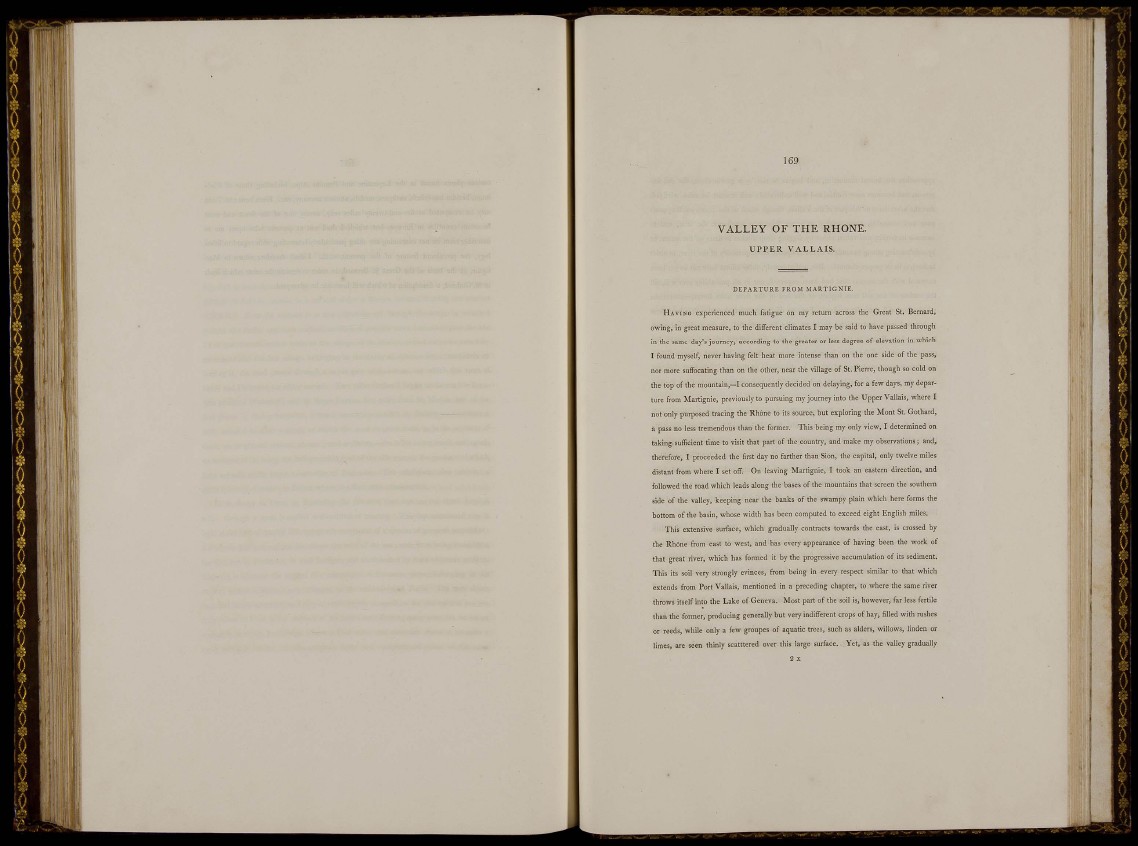
ï
VALLEY OF THE RHONE.
U P P E R VALLAIS.
DEPARTURE FROM MARTIGNIE.
HAVING experienced much fatigue on my return across the Great St. Bernard,
owing, in great measure, to the different climates I may be said to have passed through
in the same day's journey, according to the greater or less degree of elevation in which
I found myself, never having felt heat more intense than on the one side of the pass,
nor more suffocating than on the other, near the village of St. Pierre, though so cold on
the top of the mountain,—I consequently decided on delaying, for a few days, my departure
from Martignie, previously to pursuing my journey into the Upper Valíais, where I
not only purposed tracing the Rhône to its source, but exploring the Mont St. Gothard,
a pass no less tremendous than the former. Tliis being my only view, I determined on
taking, sufficient time to visit that part of the country, and make my observations ; and,
therefore, I proceeded the first day no farther than Sion, the capital, only twelve miles
distant from where I set off. On leaving Martignie, I took an eastern direction, and
followed the road which leads along the bases of the mountains that screen the southern
side of the valley, keeping near the banks of the swampy plain which here forms the
bottom of the basin, whose width has been computed to exceed eight English miles.
This extensive surface, which gradually contracts towards the east, is crossed by
the Rhône from east to west, and has every appearance of having been the work of
that great river, which has formed it by the progressive accumulation of its sediment.
This its soil very strongly evinces, from being in every respect similar to that which
extends from Port Valíais, mentioned in a preceding chapter, to where the same river
throws itself into the Lake of Geneva. Most part of the soil is, however, far less fertile
than the former, producing generally but very indifferent crops of hay, filled with rushes
or reeds, while only a few groupes of aquatic trees, such as alders, willows, linden or
limes, are seen thinly scatttered over this large surface. Yet, as the valley gradually
i l : '
lili;
'.s
.L!(|
I E
i ç r
[iiiii
i i i
t
illii,.
.t